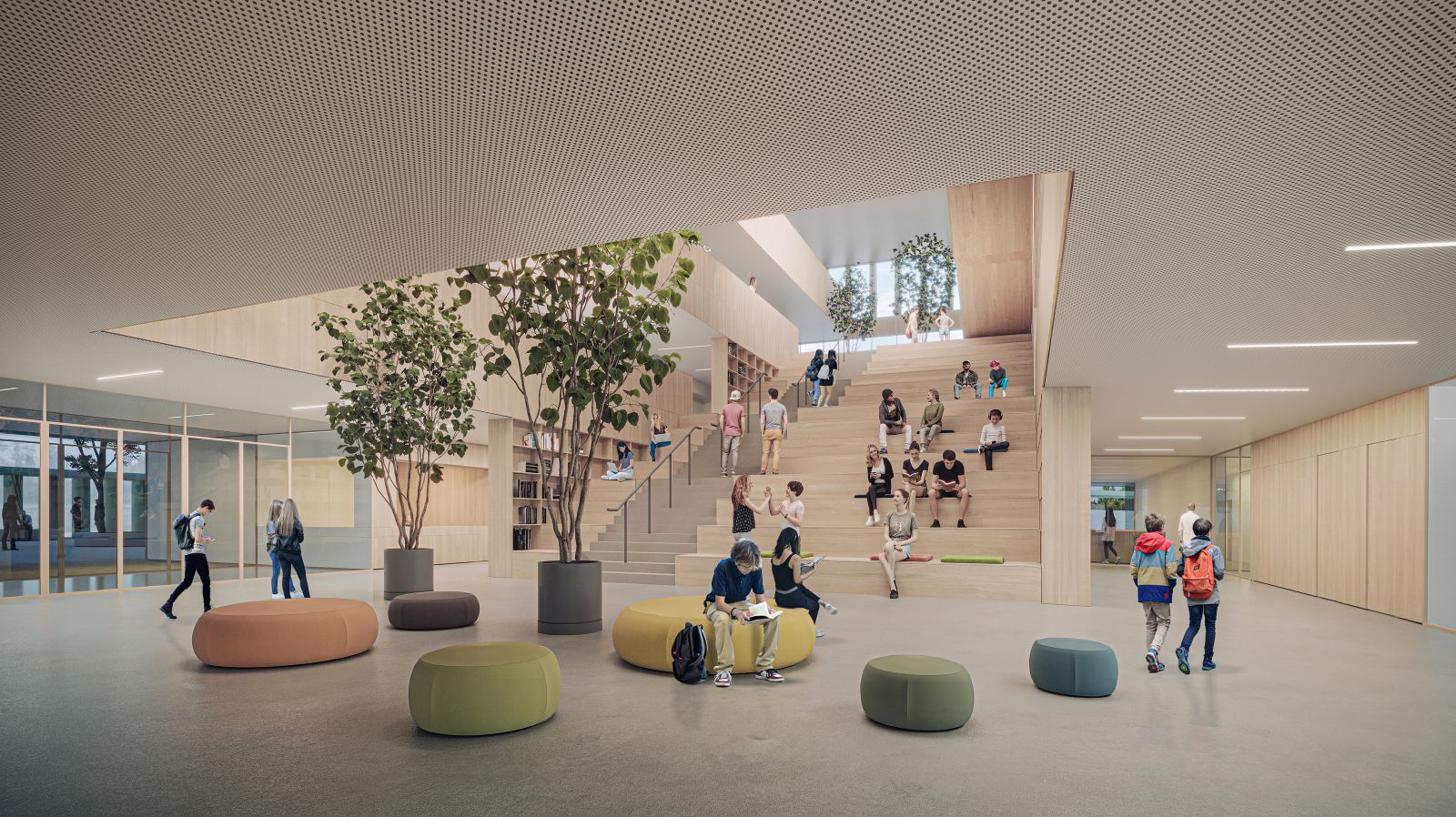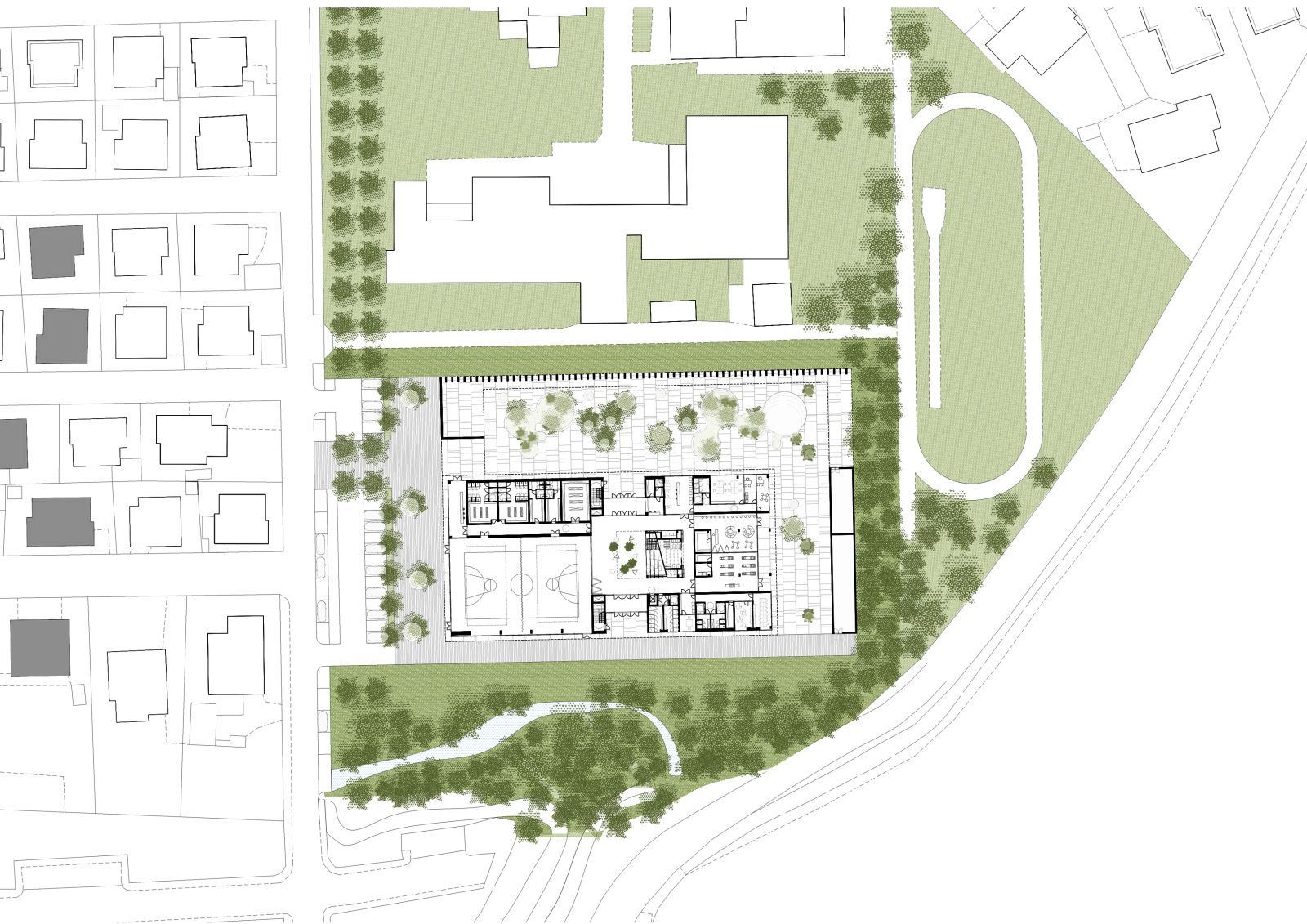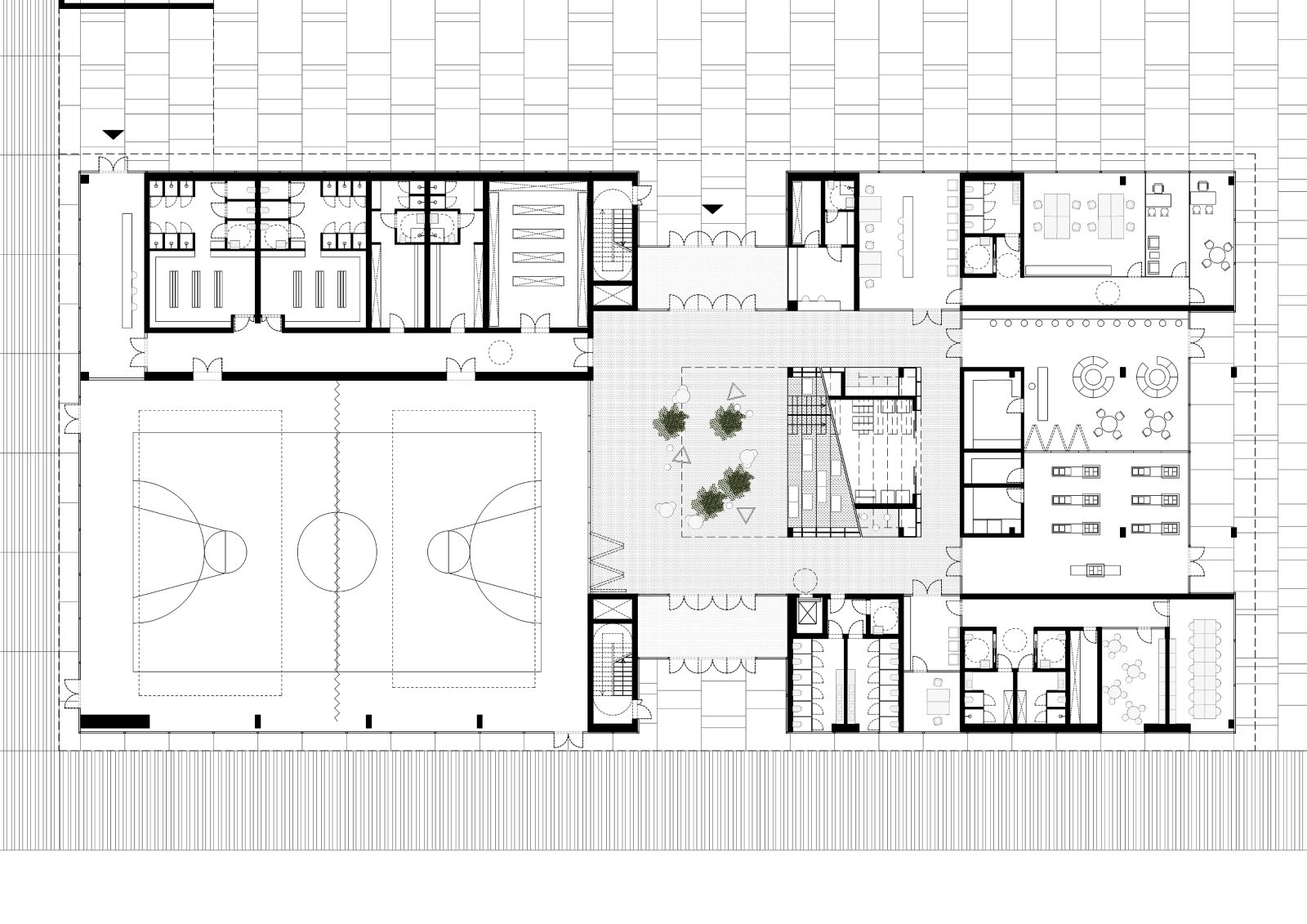The founding principle of the project is the open space, declined as a square that, starting from the city continues inside the building becoming an “agora” available to students, teachers, together with parents and citizens.
The interior “agorà” is characterized by an open staircase that connects the two levels of the school with common spaces on the ground floor and classrooms on the first. The visual and physical continuity, the fluidity of relationships that realizes the “agorà” allows the overcoming of a rigid division of spaces that are integrated and flexible to be used for different purposes.

Arranged on different levels are patios and loggias that create a relationship with the outdoors and allow for types of outdoor education. The central content of the proposal is to think of an educational institution as a “civic space” recognized by the community as a central place of collective belonging.
The project aims at the organization of classrooms that can be aggregated with each other to carry out both ordinary and extra-ordinary teaching outside the classroom. The study-laboratory areas are sized to allow maximum internal flexibility by making them in turn modularly aggregable in groups of two or three through sliding movable walls.

The classrooms are fully glazed to the outside, with aluminium window frames that are partly fixed and partly openable, protected with a system of prefabricated paste-coloured concrete sunshades. This solution characterizes the building on the upper floors as a vibrant solid while on the ground it is transparent, opening toward the square or the countryside landscape.
The architecture is proposed with an idea of “contemporary classicism” where the regular rhythm of scanning the window elements allows distribution flexibility, a strongly identified character control of light as well as great transparency to the outside.

Determinant and the anchoring of the compact object of the school (thus more sustainable) to the context with the porch that perimeters the surrounding open space.
This element in addition to generating a controlled outdoor collective space usable for “en plein air” education constitutes a clear urban relationship with the surroundings and a compositional balance between the horizontality of the surroundings and the verticality of the volume. Source by Botticini + Facchinelli ARW.

- Location: Lodi, Italy
- Architect: Botticini + Facchinelli ARW
- Design team: Daniele Quadri, Silvio Lussana
- Structure, Elettrical, ITF: 3TI Progetti
- Client: PNRR (National Recovery and Resilience Plan)
- Total area: 13,457 sqm
- Built area: 8,407 sqm
- Year: 2022
- Images: Moreno Marrazzo, Courtesy of Botticini + Facchinelli ARW




